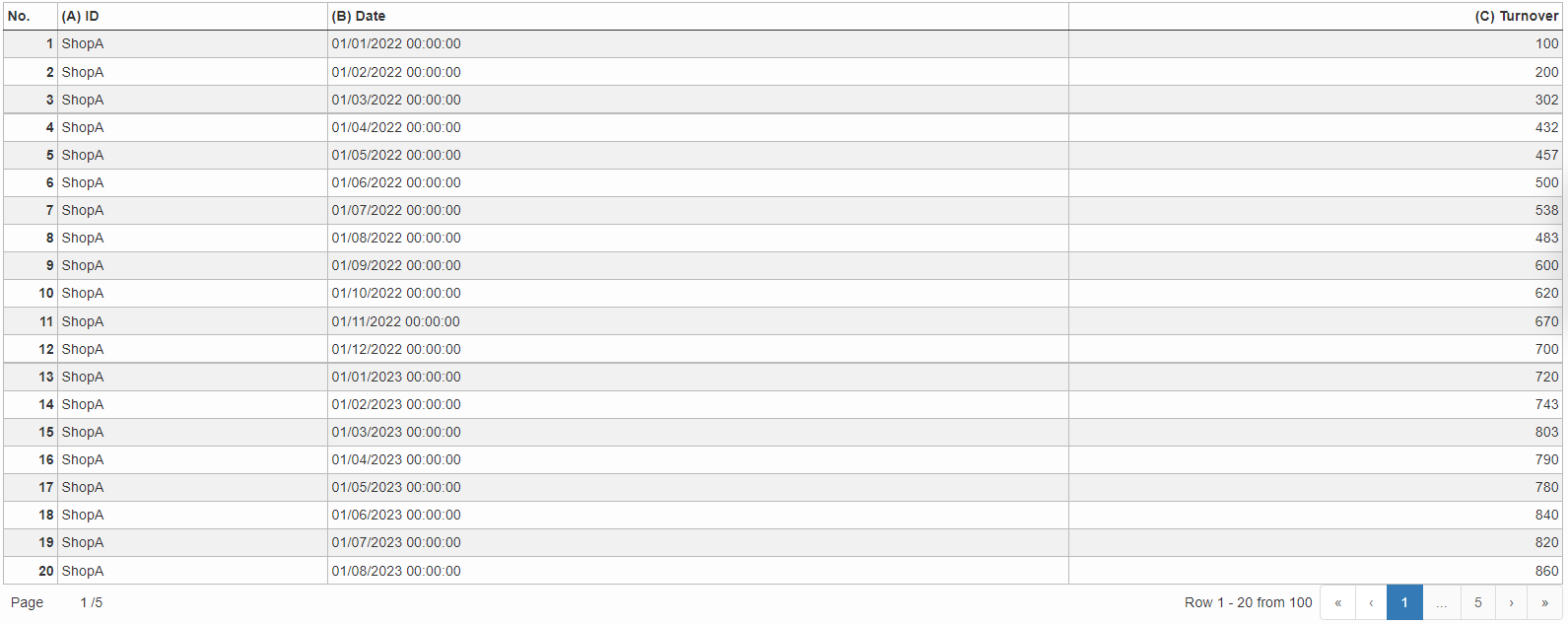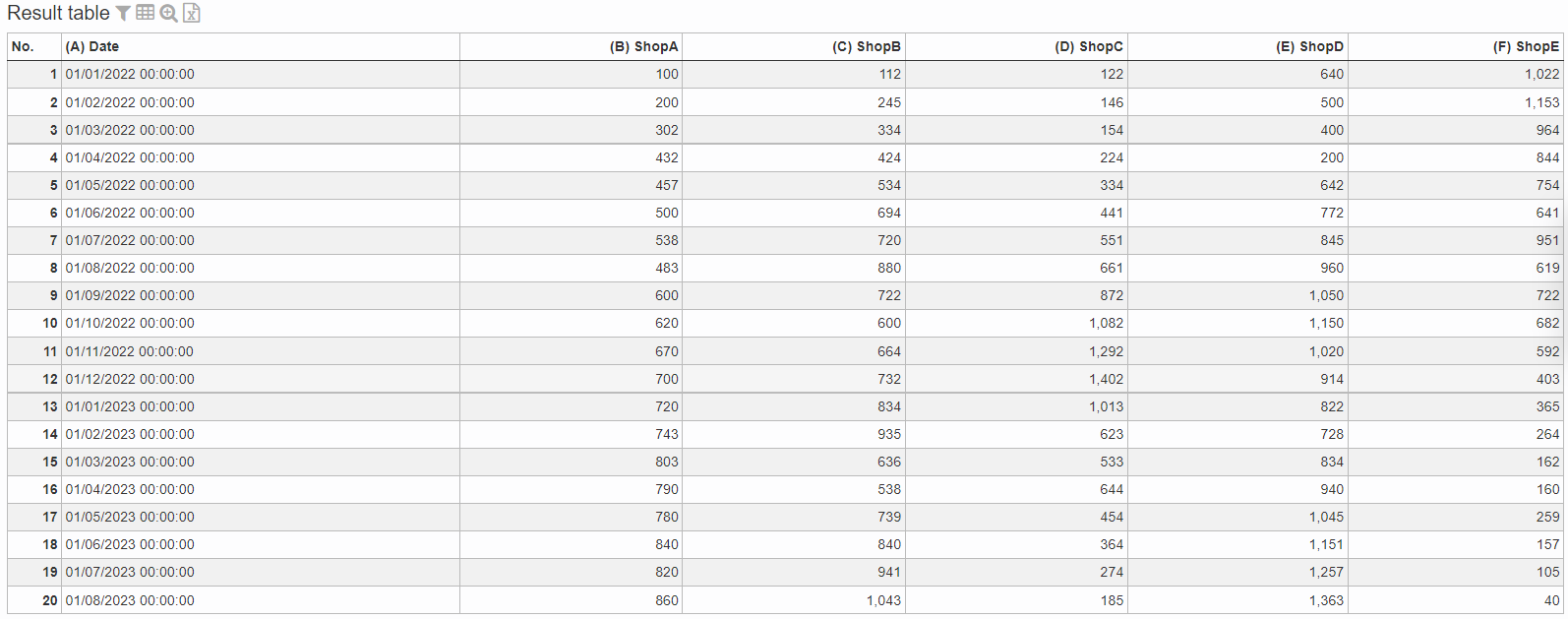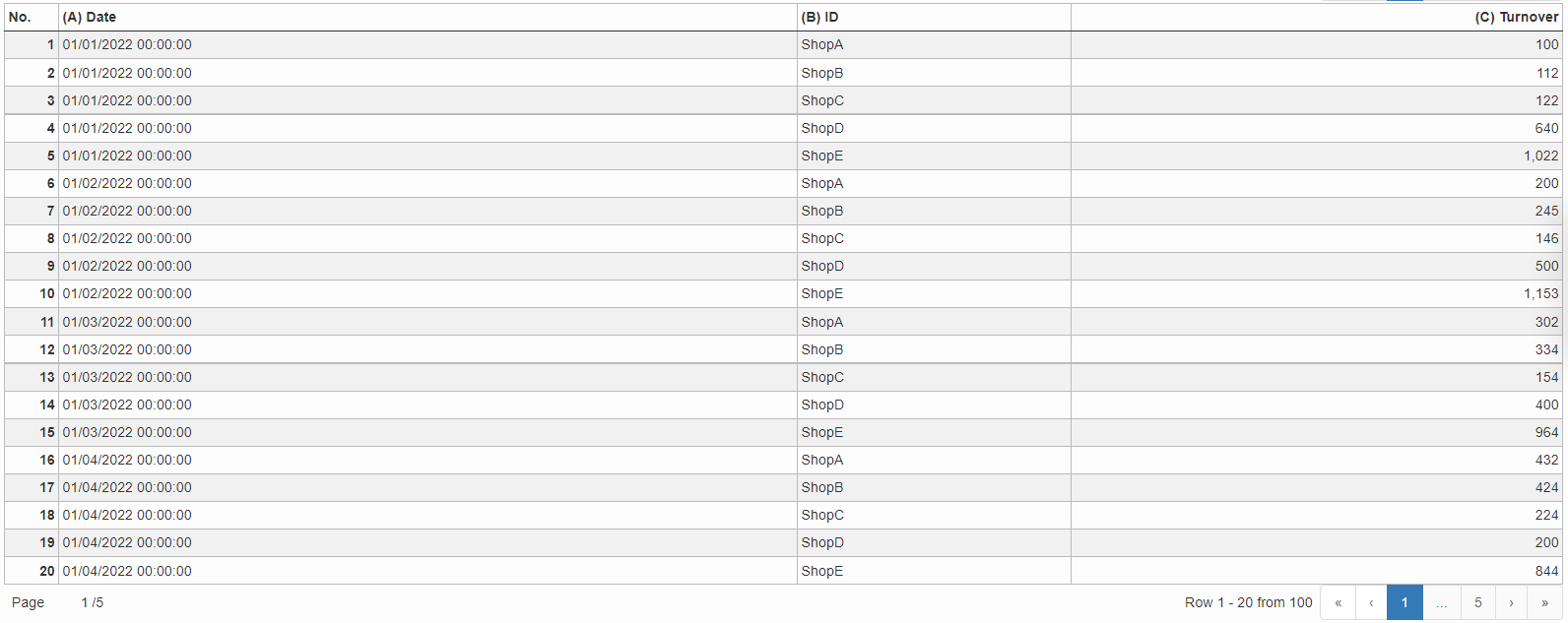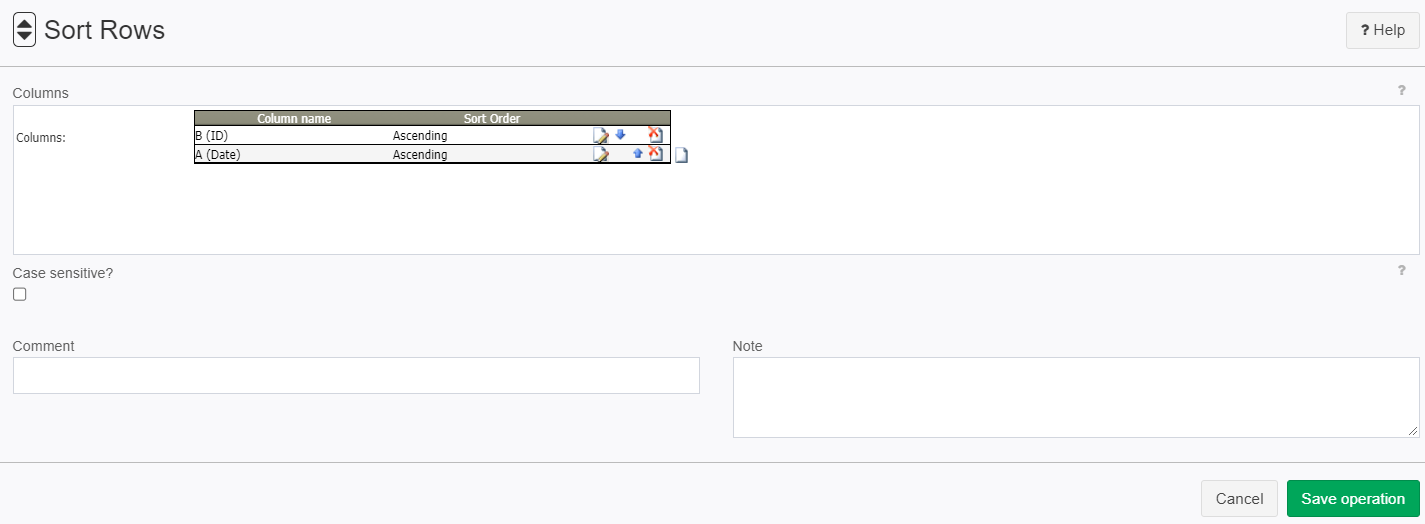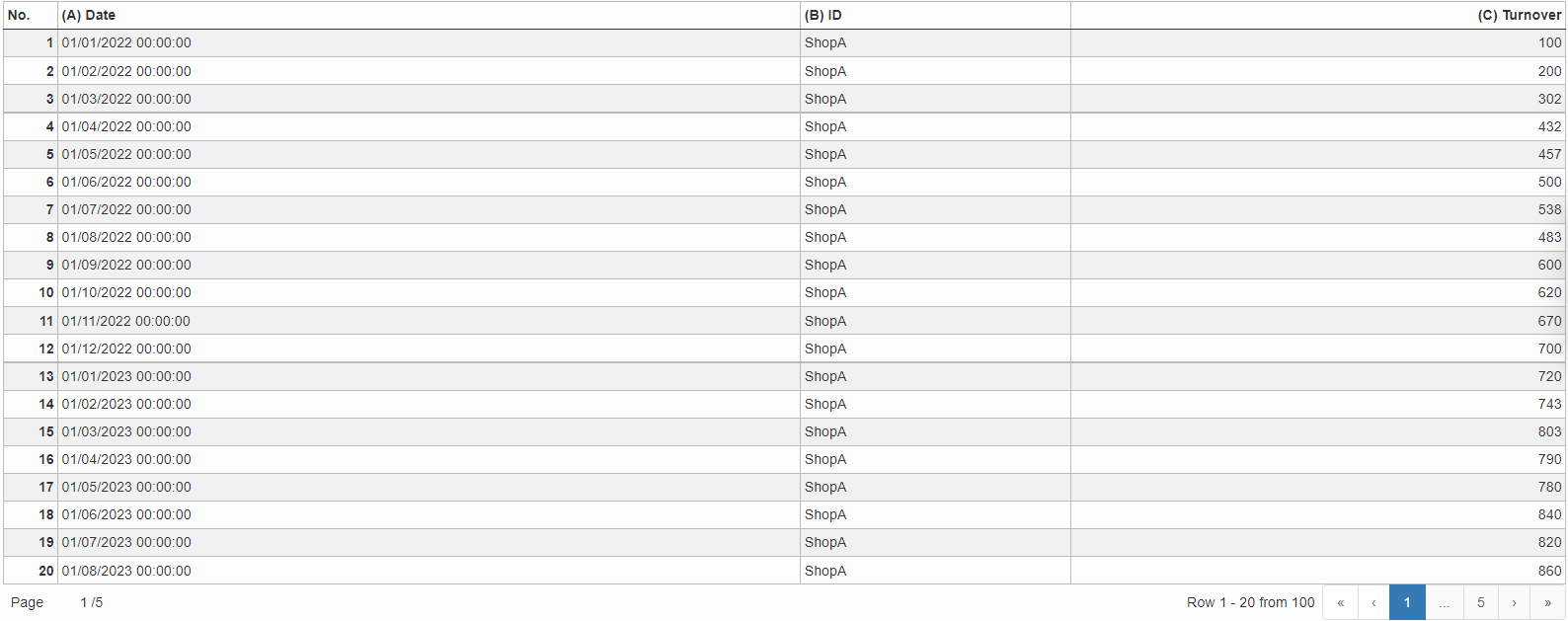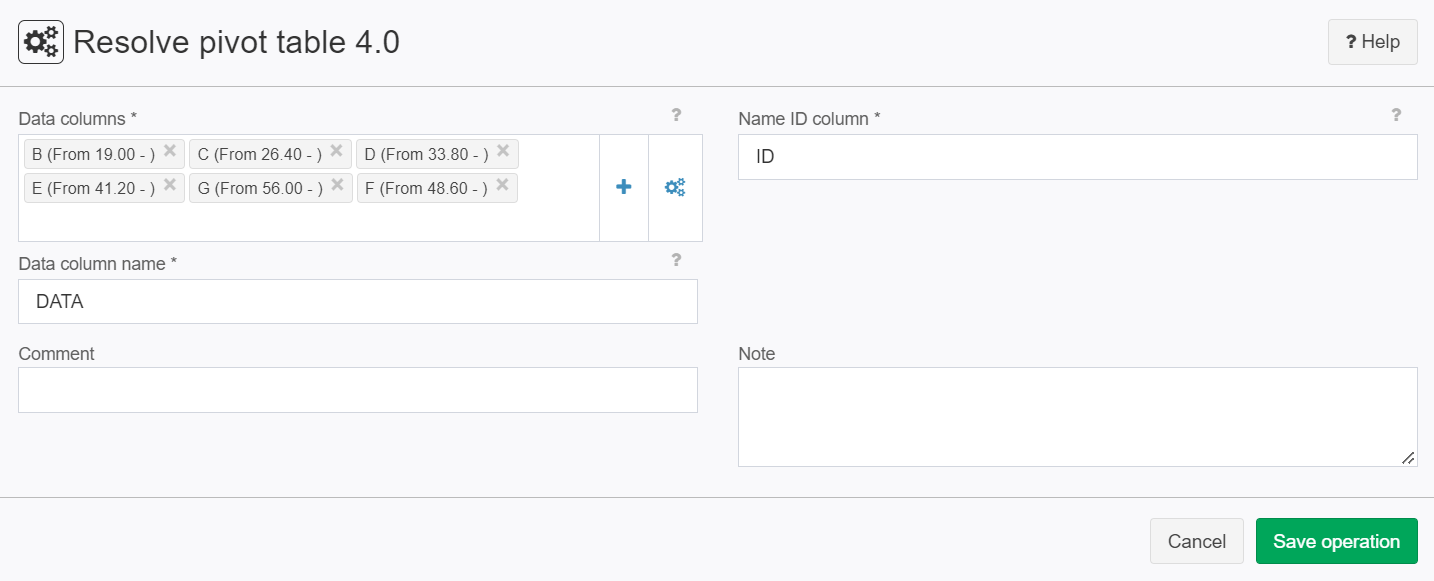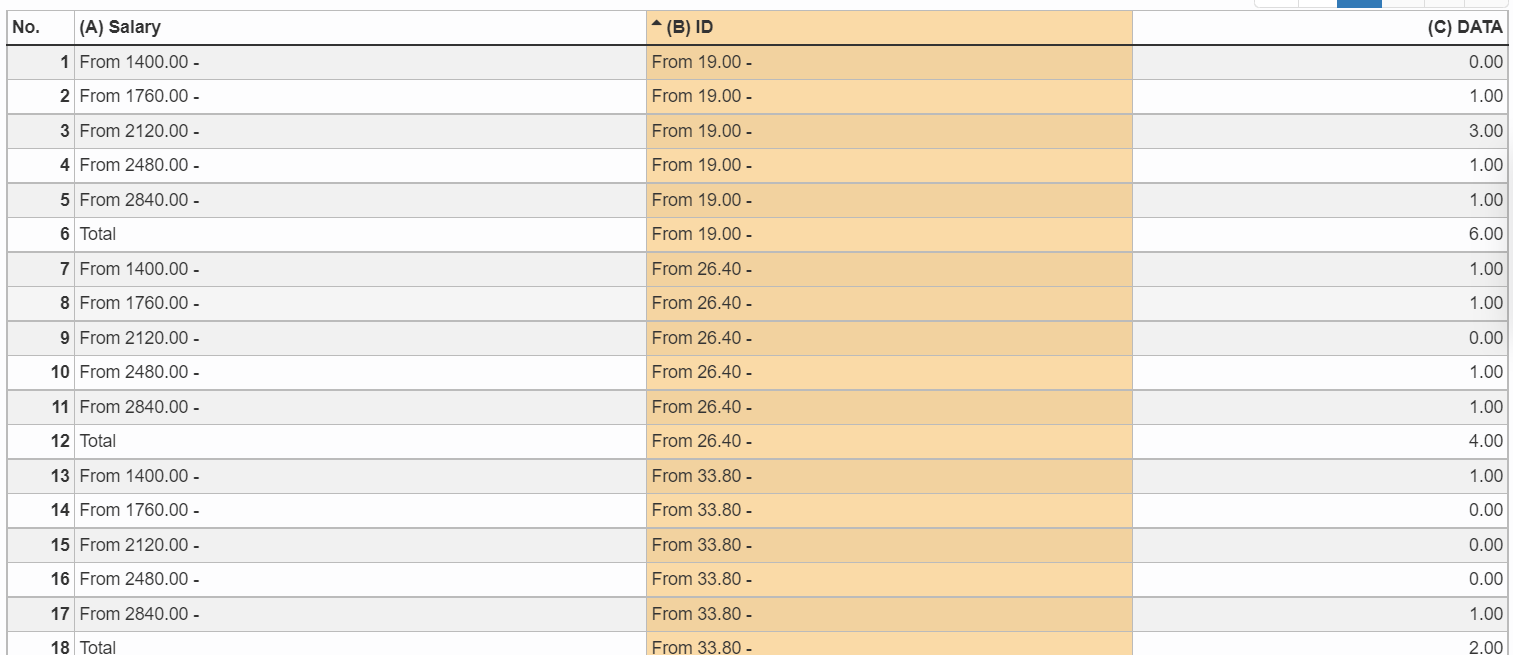Resolve pivot table 4.0
Summary
Converts a pivot table (many columns) into a table with ID column and data column.
This operation is very valuable if calculated results are imported. However, it often requires some prior editing to set the times into the correct format.
Configuration
Input settings of existing table
Name | Value | Opt. | Description | Example |
|---|---|---|---|---|
Data columns | System.Object | - | Columns that include the values to be resolved. | - |
Settings
Name | Value | Opt. | Description | Example |
|---|---|---|---|---|
Name ID column | System.String | opt. | Column name for identifier column | - |
Data column name | System.String | opt. | Column name for data column | - |
Want to learn more?
Converts a pivot table (many columns) into a table with ID column and data column.
Screenshot

Examples
Example: Resolve a pivot table
Situation | The following pivot table (result from Pivot table operation) shall be resolved to its original state. Before Pivot table operation:
Pivot table to resolve:
|
|---|---|
Settings |
|
Result | |
Project File | - |
Example: Resolve a pivot table 2
Situation | The following pivot table (result from Pivot table operation) shall be resolved to its original state.
|
|---|---|
Settings | Enter the data columns which contain the values in the operation settings:
|
Result | The result looks as follows:
|
Project-File | - |
Troubleshooting
Problem | Frequent Cause | Solutions |
|---|---|---|
There are more than one identifier columns in the resulting data node. | The identifier columns need to be joined to one column before dissolving the pivot table. Typically, Formula operator (row-by-row) (5.0) is used for this. | |
Column headings do not display the times correctly. | An intermediate step is needed. | The fragmentation of strings is described in the Formula operator (row-by-row) (5.0) |

